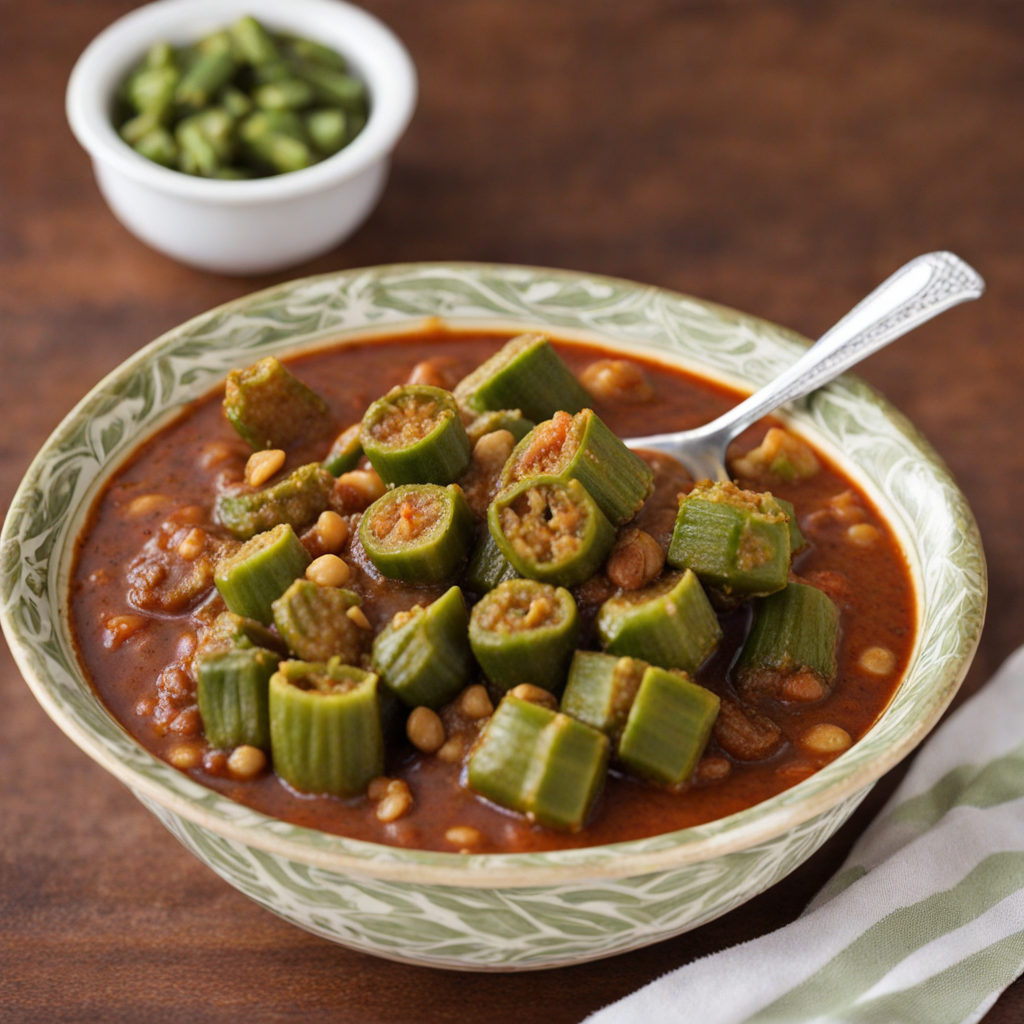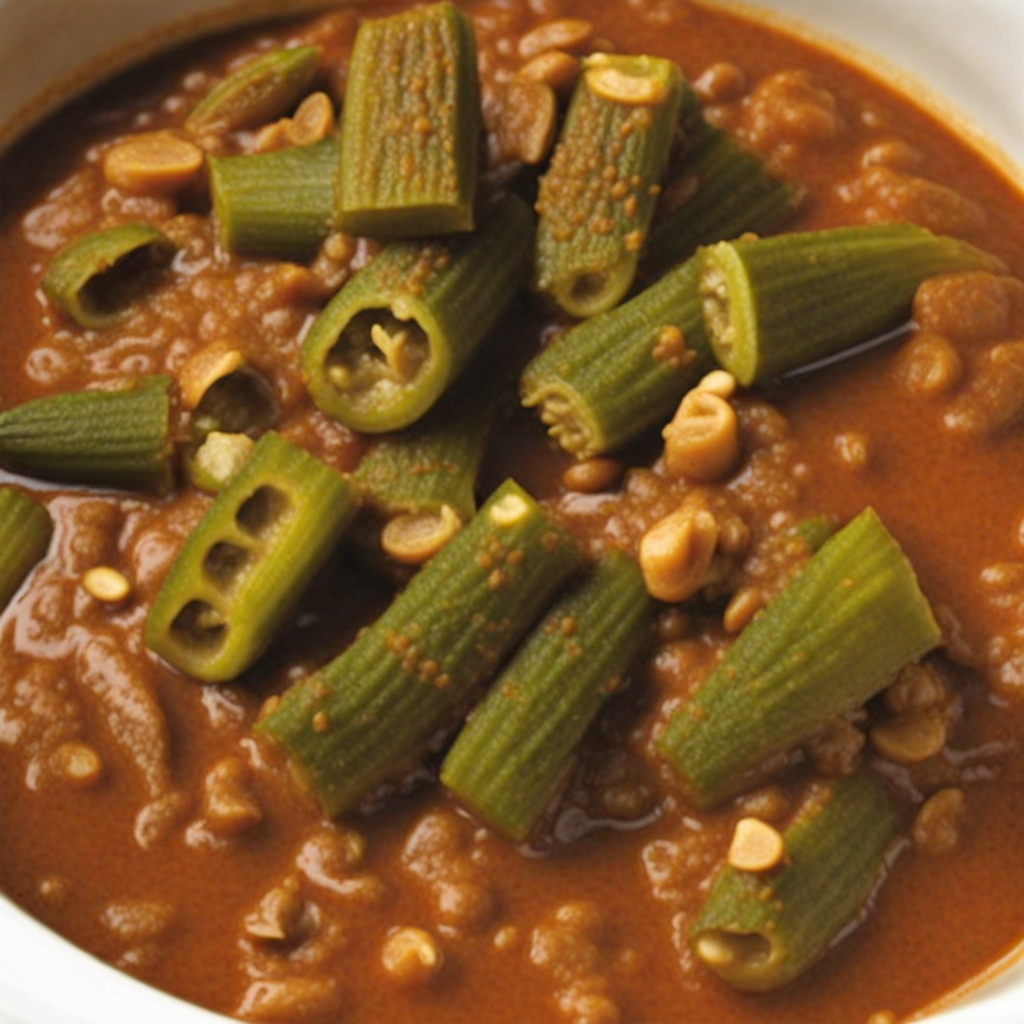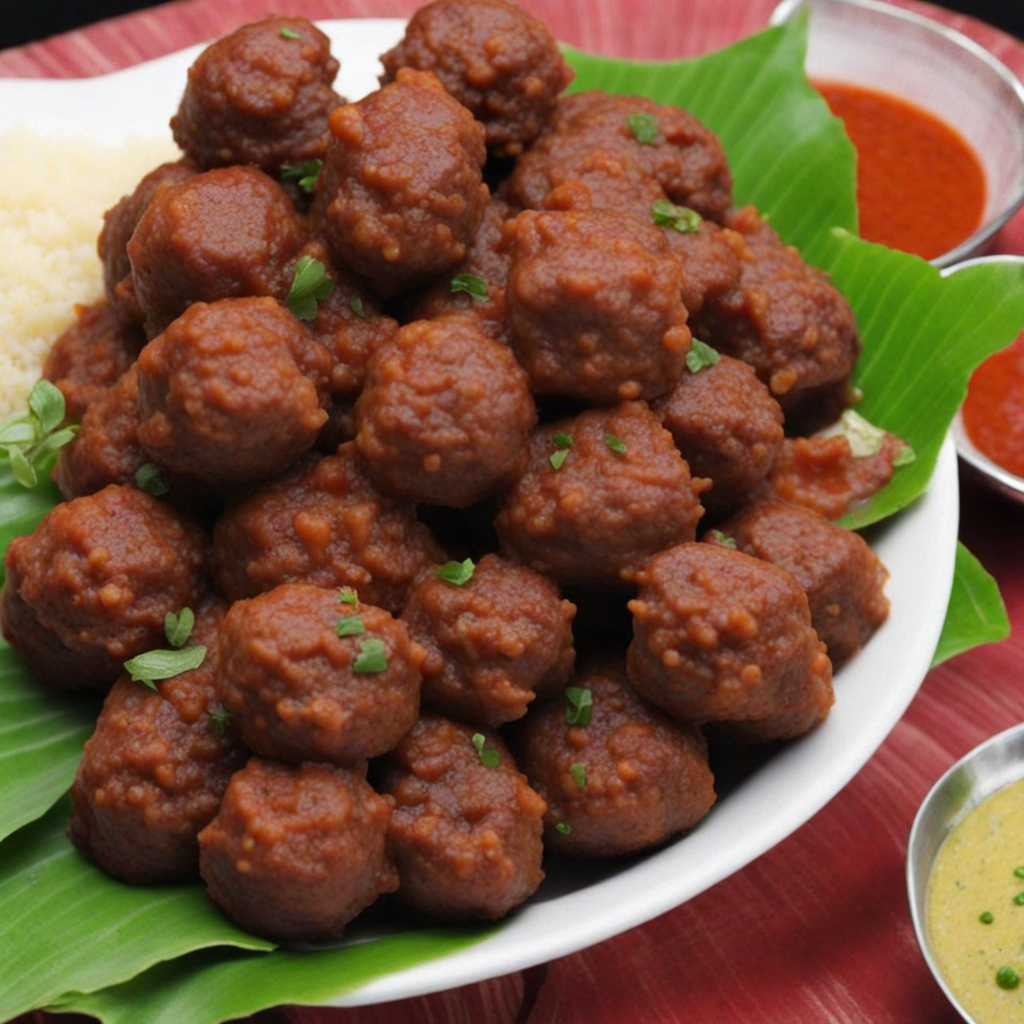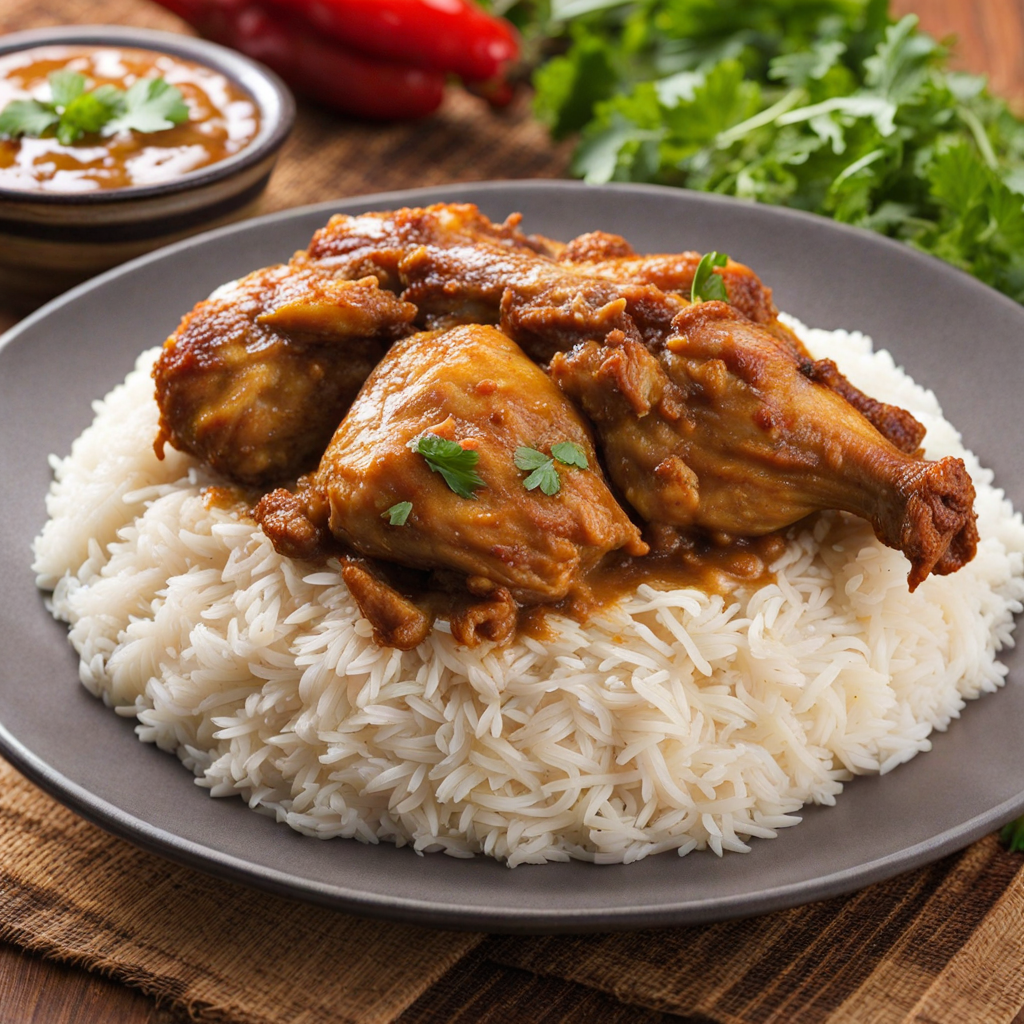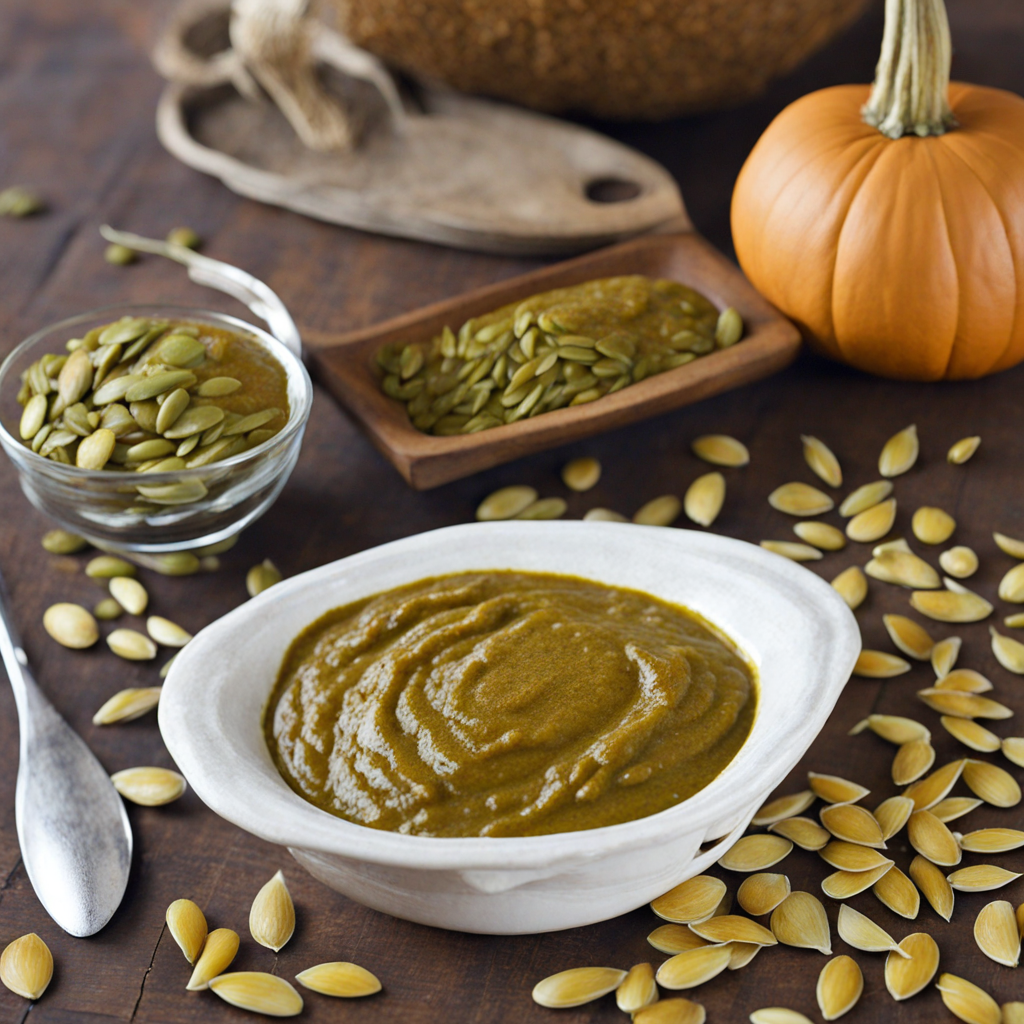Okra Stew
Okra Stew, a beloved dish from the Central African Republic, is a delightful fusion of flavors and textures that showcases the region's culinary heritage. The star ingredient, okra, is often praised for its unique slimy texture, which thickens the stew and adds a rich body to the dish. Freshly harvested okra pods are sliced and simmered, allowing their natural juices to mingle with a medley of spices and seasonings. This stew often incorporates a variety of vegetables, such as tomatoes, onions, and peppers, which not only enhance the flavor profile but also add vibrant colors to the dish, making it visually appealing. The protein component of Okra Stew can vary, with traditional recipes including chicken, fish, or even various meats, all marinated and cooked until tender. The flavors meld beautifully as the ingredients are stewed together, creating a comforting, hearty meal that is both satisfying and nutritious. The use of local spices, such as groundnut paste or chili pepper, elevates the dish, introducing an earthy richness and a gentle warmth that lingers on the palate. Each spoonful is a burst of flavor, inviting diners to savor the complexity of the blend. Often served with a side of rice or fufu, Okra Stew is more than just a meal; it is an experience that reflects the communal spirit of sharing food in Central African culture. The dish is perfect for gatherings, as it brings people together around the table, encouraging conversation and connection. Whether enjoyed at home or in a local eatery, Okra Stew is a delightful introduction to the unique tastes of the Central African Republic, promising a culinary adventure that is both comforting and intriguing.
How It Became This Dish
Ragoût de Gombo: A Culinary Journey Through the Central African Republic Origin and Historical Context Ragoût de Gombo, or Okra Stew, is a beloved dish in the Central African Republic (CAR), a nation rich in cultural diversity and agricultural abundance. The roots of this dish can be traced back to the indigenous communities of Central Africa, where the cultivation of okra (Hibiscus esculentus) has been a staple for centuries. Okra, native to Africa, is believed to have originated in the regions around the Nile River and spread to various parts of the continent, including the CAR, through trade routes and migration. The CAR has a history marked by various influences, including Bantu migrations, Arab traders, and European colonization. Each of these influences contributed to the culinary tapestry of the region. The Bantu peoples, for example, brought with them agricultural practices and knowledge that allowed for the successful cultivation of crops like okra, which thrived in the warm, tropical climate. As a result, Ragoût de Gombo evolved as a dish that not only reflected local agricultural practices but also the social and cultural interactions between different communities over time. Cultural Significance Ragoût de Gombo is more than just a dish; it is a symbol of community, hospitality, and the resilience of the Central African people. In the CAR, meals are often communal experiences, where families and friends gather to share food, stories, and traditions. The preparation of Ragoût de Gombo is typically a family affair, involving multiple generations working together to create a dish that holds deep-rooted significance. The stew is often made with a variety of ingredients, including meat (typically chicken, beef, or fish), a medley of vegetables, and, of course, okra. The use of local spices and herbs adds unique flavors, making each family’s version of the dish distinct. In many cases, the recipe is passed down through generations, with each cook adding their own twist, thus preserving cultural heritage while allowing for personal expression. Additionally, Ragoût de Gombo plays a role in ceremonial occasions. It is often served during festivals, weddings, and communal gatherings, symbolizing unity and togetherness. The act of sharing this hearty stew reinforces social bonds and creates a sense of belonging among those who partake in the meal. Ingredients and Preparation The main ingredient of Ragoût de Gombo is okra, which is known for its unique texture and ability to thicken stews. In the CAR, the preparation of this dish typically begins with the selection of fresh okra, which is then sliced and sautéed to release its natural flavors. The stew often includes a base of sautéed onions, garlic, and tomatoes, providing a rich foundation for the dish. Meat is a crucial component, with chicken and beef being the most commonly used. The choice of meat often reflects personal preferences and availability, as well as cultural practices regarding livestock. Once the meat is browned, the vegetables, including okra and sometimes additional greens, are added to the pot along with spices such as chili peppers, ginger, and various local seasonings. The dish is then simmered until the flavors meld together, resulting in a thick, savory stew that is typically served over rice or with a side of fufu (a starchy side made from cassava or plantains). The combination of the tender meat, vibrant vegetables, and the unique texture of okra creates a dish that is both comforting and satisfying. Evolution Over Time As the Central African Republic has evolved, so too has the Ragoût de Gombo. The impact of colonialism in the late 19th and early 20th centuries introduced new ingredients and cooking methods to the region. French colonial influence, in particular, brought an array of culinary techniques and flavors that mingled with traditional practices. This interaction created a hybrid culinary culture where local dishes began to incorporate elements from European cuisine. In contemporary times, globalization has also influenced the preparation and presentation of Ragoût de Gombo. The availability of diverse ingredients in urban markets has allowed cooks to experiment with variations of the dish, incorporating elements from other West and Central African cuisines as well as international flavors. Modern adaptations may include the use of coconut milk for a creamier texture or the use of spices from other regions, further enriching the dish’s flavor profile. Moreover, as Central African cuisine gains recognition on the global stage, chefs and food enthusiasts are rediscovering traditional dishes like Ragoût de Gombo. This renewed interest has sparked a culinary revival, where chefs are not only honoring traditional recipes but also reimagining them for contemporary palates. Food festivals, cooking classes, and social media platforms have emerged as venues for showcasing this delicious stew, thereby promoting CAR’s culinary heritage and fostering cultural exchange. Conclusion: A Living Tradition Ragoût de Gombo is a testament to the Central African Republic's rich culinary heritage and the resilience of its people. It encapsulates a storied history of agricultural practices, cultural exchanges, and communal bonds. As a dish that has evolved over time while maintaining its core essence, Ragoût de Gombo continues to thrive as a cherished staple in Central African homes. In a world that is constantly changing, Ragoût de Gombo serves as a reminder of the importance of food in shaping identity and fostering connections. It is a dish that tells a story—of a land, its people, and their enduring traditions. As we savor this hearty stew, we not only indulge in its flavors but also partake in a legacy that transcends generations, celebrating the heart and soul of the Central African Republic.
You may like
Discover local flavors from Central African Republic


